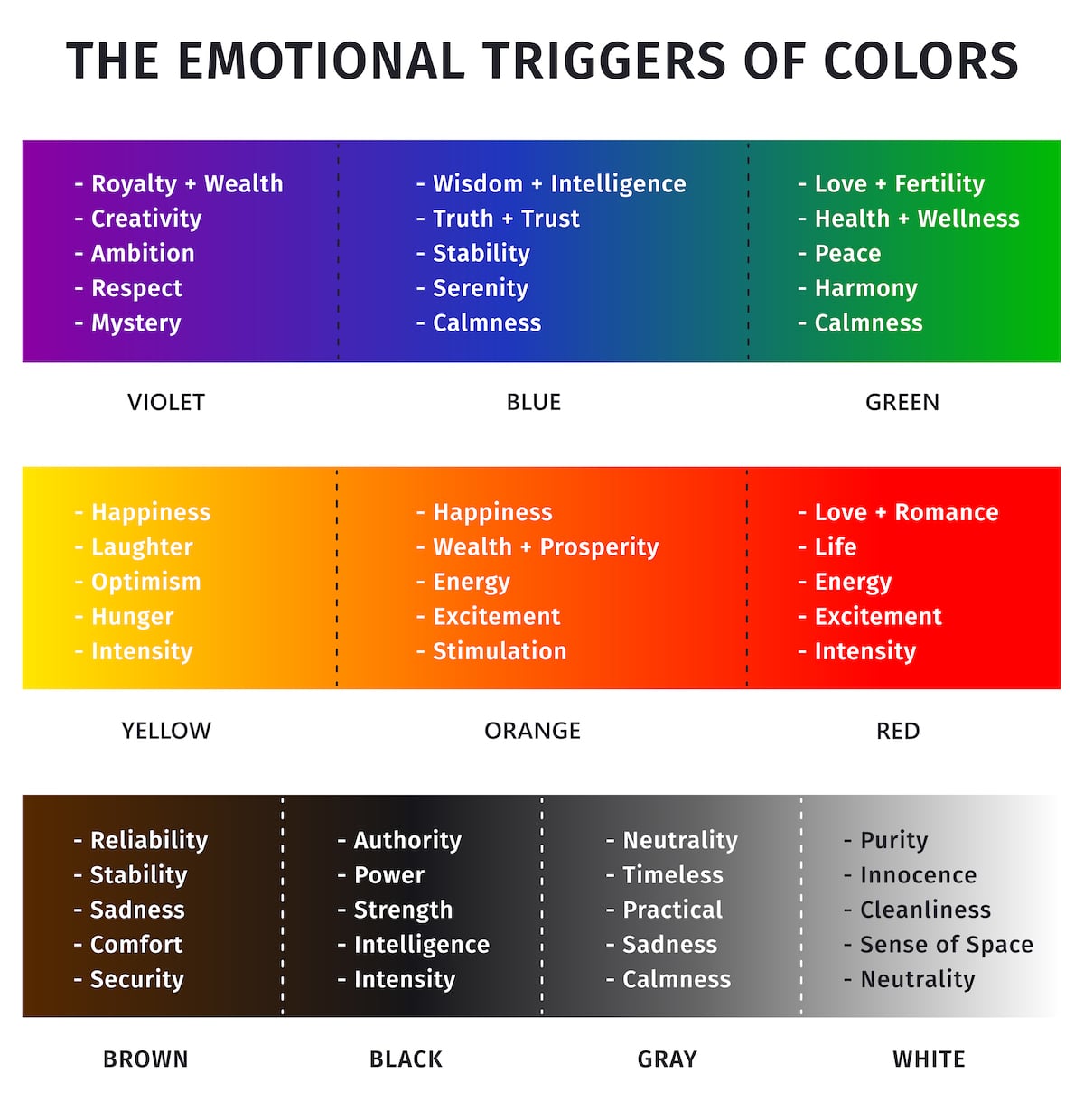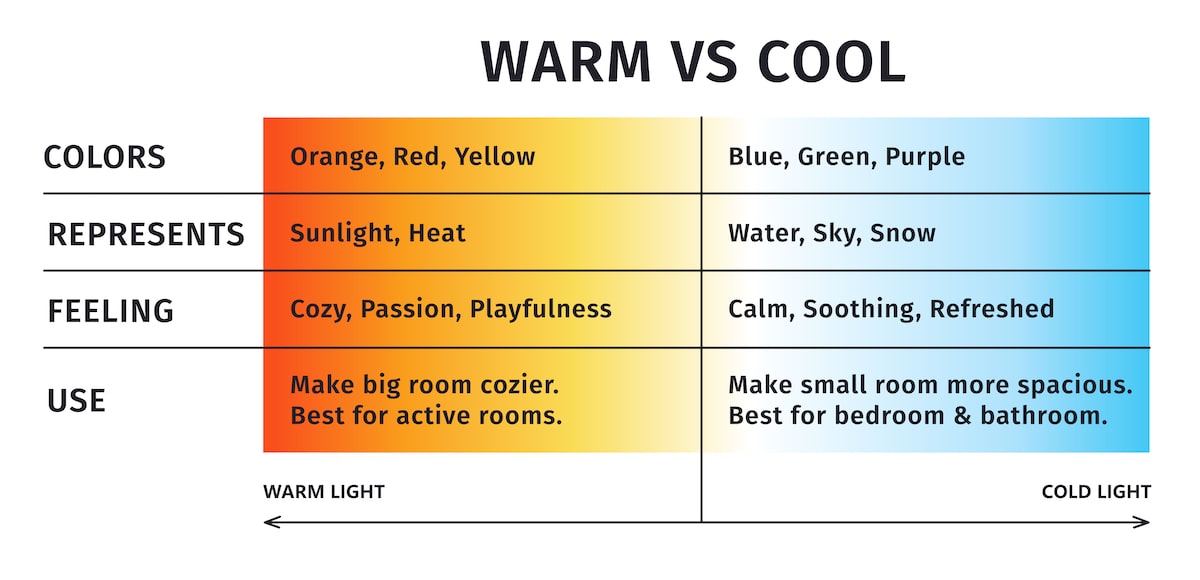If you’re repainting your bedroom walls you might be wondering which color to choose. Aside from aesthetics, it turns out your wall color can affect your mood and how well you sleep! Certain colors are also less attractive to bedbugs, which is a big plus in any bedroom.
To help you decide what color to paint your room, we’ve explored how popular color choices can affect your mood, how color temperature affects your sleep, and what the best colors for certain needs are. We’ve also listed some ways to add color to your bedroom without painting your walls.
The Psychology of Colors: How Do Colors Affect Your Emotions?
Simran Kaur, interior designer and founder of “Room You Love,” says that “each color has a different vibration as it enters through the eye to our brain,” which means our brains release different hormones in response to each color. These hormones all create a different emotion in us.
He says this is the same thing that happens when we listen to music – the different vibrations in music produce different emotions in us. We’ve listed some common colors below so you can learn some basic color psychology.
Red
Sara Abate Rezanifar, B. Des., Branding and Communications Director of Ambiance Design Group says that red is an exciting hue that “raises energy levels.” That makes it a good fit for home offices, creative spaces, and entryways where it can create a strong first impression. Red is also a good option for living and dining rooms, because it can “stimulate conversation and bring people together.
Kaur says red has a “profound effect on our nervous system.” It will make our hearts beat faster the same way physical activity does. In his opinion, red can increase the appetite, which makes it a good fit for kitchens. But Kaur cautions that red might increase feelings of fear and anxiety. Since the color creates so much excitement, it’s not a good fit for bedrooms. It will be hard to fall asleep in a red room.
Orange
Kaur says orange tones “attract attention” and increase sexual feelings and creativity. He says, unlike red interiors, orange interiors are “friendly” rather than intimidating. If you’re looking for an attention-grabbing or creativity-enhancing wall color, orange might be a better fit than red.
Pink
If you want to give your bedroom a Barbie DreamHouse makeover, you may want to paint the walls pink. But does this color promote a relaxing night of sleep? Many people find light shades of pink to be soothing, pretty and calming. However, the bright Barbie-inspired shades of pink may feel too overwhelming for some people. Like the color red, this shade of hot pink can spark feelings of creativity and excitement. This is great for a music room, but it may not be best for a bedroom. So, if you’re considering spending a night in the Malibu Barbie DreamHouse Airbnb, you’ll likely feel invigorated and inspired—but you may not feel sleepy and relaxed.
Yellow
Rezanifar says yellows “evoke happiness and positive energy.” This welcoming hue is a great fit for kitchens or dark spaces, but it also looks great in rooms that get lots of natural light. Kaur agrees, he thinks yellow “invokes high energy, enthusiasm, and happiness,” and might even help you think! But, since yellow is an energy-increasing color, it is not a great fit for bedrooms. A bright yellow will keep you up at night, not help you snooze.
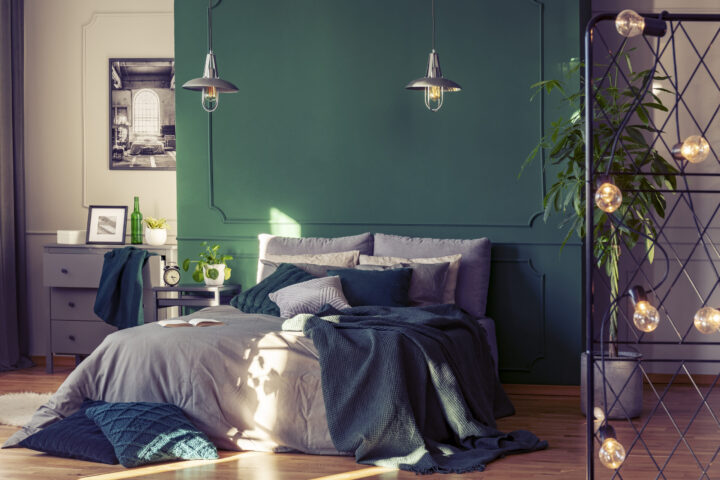
Green
According to Rezanifar, green “is an optimistic color that can be used in almost any room in the house.” She recommends incorporating it through chairs, wallpaper, and accent walls. Kaur agrees, and says green is the “color of optimism, calm, and peace.” She says it can help our brains relax and make thought-out decisions, making it a good color for a home office.
Blue
Rezanifar and Kaur agree that blues have a calming influence and can stimulate peace, trust, and security. In fact, you’ll get better sleep in a blue bedroom! Rezanifar says the color is also great in bathrooms, which should feature soothing color schemes.
Purple
Kaur says purple is the color of “spirituality, higher intelligence, and mental calm.” Light purple colors like lilac are great options for bedrooms. Darker purples can trigger feelings of frustration or sadness, so he recommends sticking to lighter shades. Rezanifar agrees and says purple can also be the perfect color for dressing rooms or hallways.
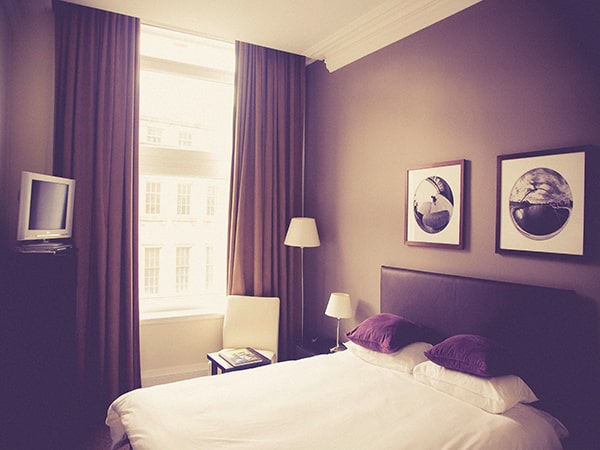
Brown
Brown can make us feel secure and safe. It’s associated with resilience and dependability. While not all brown shades look good on the walls, furnishing or painting your room with neutral colors in the brown family can make you feel safer and more relaxed.
Black
Kaur says that black triggers “ill-will, indifference, and pessimism.” He recommends avoiding using too much black to prevent your room from feeling depressing.
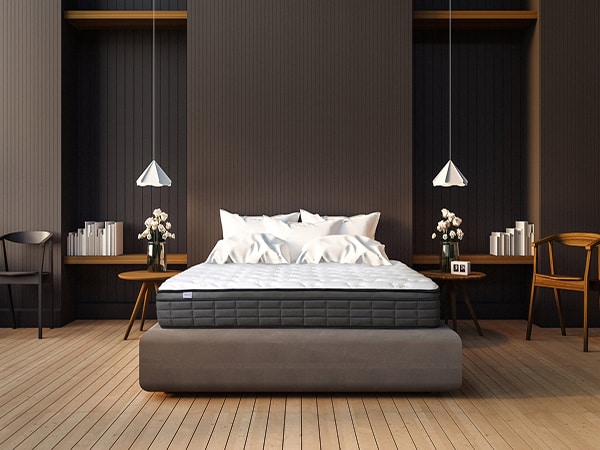
Gray
Too much gray can make us feel sad, lonely, and depressed. Though gray is a trendy color right now, color psychologists recommend considering other room colors. For instance, a blue with gray undertones can feel relaxing rather than depressing.
White
Kaur says white stimulates peace and calm. It’s also considered “a color of spirituality” in many cultures. But other people might not feel much at all when looking at white, because it is a “bland color.” If you’re looking for a safe, neutral option for a guest room, white or off-white is a good choice.
Warm vs Cool Colors: How Does Color Temperature Affect Sleep?
So, what is the right color for your bedroom? It depends on your tastes, but you might want to stick to cool colors. Read on below to learn what that means.
Warm Colors
Warm colors can stimulate energy and sometimes stress and anxiety. So, warm bright colors are not good picks for the bedroom. Interior designer Simran Kaur recommends sticking to earth tones like terracotta, brown, cream, and coral if you’d like to use warm tones in your bedroom decor. He says these are calming colors and work well in a bedroom.
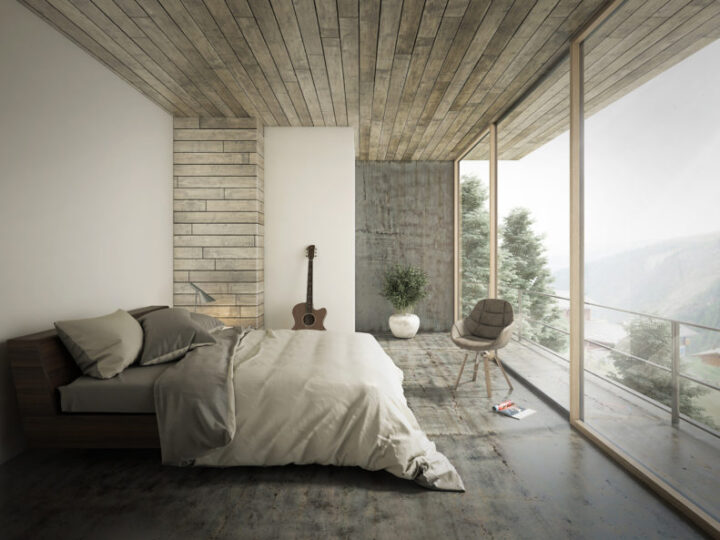
Cool Colors
Cool colors like blue, green, and purple can help people relax before bedtime. This makes them great options for bedrooms, as they can make the room feel soothing and relaxing. Rezanifar recommends painting your bedroom a cool color, but using warm lighting in the room to make it feel cozy and safe.
8 Best Bedroom Colors for Every Sleep Environment
Now that you know a little bit about how different colors can stimulate different emotions, let’s take a look at how different colors can impact things like feng shui, kids’ rooms, and small spaces.
Best Color for Bedroom Feng Shui
Rezvanifar says warm earth tones like tan, cream, and peach create “a welcoming feel” while soft natural colors like light blue and green can create peaceful energy. Feng Shui practitioners say warm earth tones are best for a cozy feel, while those looking to create a tranquil space should stick to blues and greens.
Best Neutral Paint Colors for Bedroom
Neutral colors in the earth tone family are often best for creating a welcoming, cozy bedroom. We recommend checking out tan and cream paint samples to get some color ideas. A soft blue-gray paint color can also look neutral and help soothe and relax you before bedtime.
Best Bedroom Color for Couples
The best color for a couple’s bedroom is one that you both like! While orange can stimulate sexual activity, it might also be too warm and energetic for a bedroom. The color of your bedroom should help you feel calm and relaxed before bed. So, we recommend sticking to blues, greens, or earth tones.
Best Color for Small Bedroom
Earth tones and neutrals are good for making small bedrooms look bigger. They can help make the walls recede into the background, expanding your space. Off-white or pastel blue are both great picks for a small room.
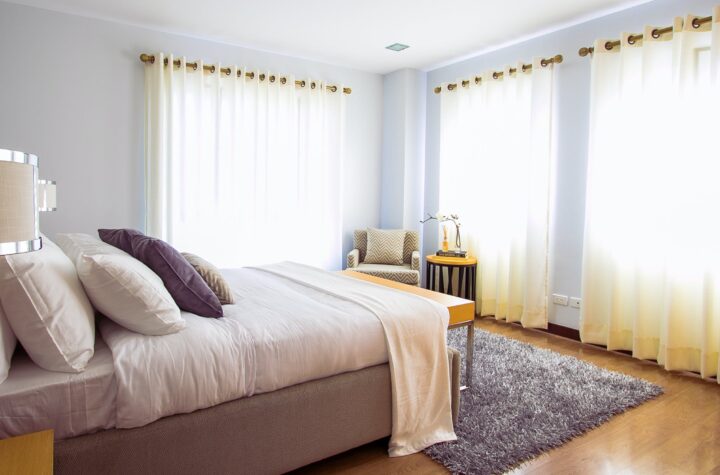
Best Colors for Dark Bedroom
If you don’t get a lot of natural light in your bedroom, stay away from dark colors, which will make the room feel drab. Lighter colors like lavender, light blue, and soft beige can make your room feel brighter and more spacious. Yellows can also make a room feel brighter and more inviting, though the color might be too stimulating for a bedroom.
Best Color for Guest Bedroom
We recommend sticking to light blues for guest bedrooms. Blue helps everyone fall asleep, so your guests should leave feeling like they got a great rest! If you don’t like blues, off-white is another popular color.
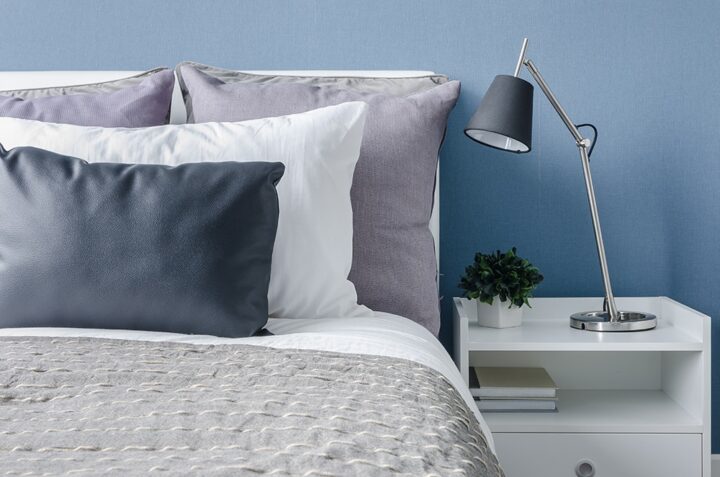
Best Color for Kids Bedroom
Peter Emmanuel Rossi, interior designer and founder of “ByRossi” says that yellow is a top bedroom color for kids. He says “softer yellows can help concentration, while brighter shades increase memory.” He also recommends green in kids’ rooms, because it has a calming effect and can improve reading speed and comprehension!
Best Colors for Nursery
Kaur and Rezvanifar both recommend blues, pinks, and greens for nurseries. In fact, Rezvanifar says pink can evoke feelings of nurturing, which is great for a nursery! You can’t go wrong with a cheerful pastel hue when painting a nursery.
7 Ways to Add Color to your Bedroom without Painting
Adding color to your home decor is a great way to spruce up your space without painting it. We have some suggestions for adding a pop of color below.
Colored Comforters
Colored comforters can be a great focal point in the room, especially if you have neutral-colored walls and furniture. Adding a pop of color with a bright comforter is also a great way to add a stimulating color like orange or red to your bedroom without making the room too overwhelming to sleep in. Check out the best comforters of the year for some fun options.
Throw Pillows
Throw pillows can elevate your decor and are great ways to change your bedding for the season without buying a whole new quilt. Adding warm-toned throw pillows to a cool-toned room is a great way to make your room feel both soothing and cozy.
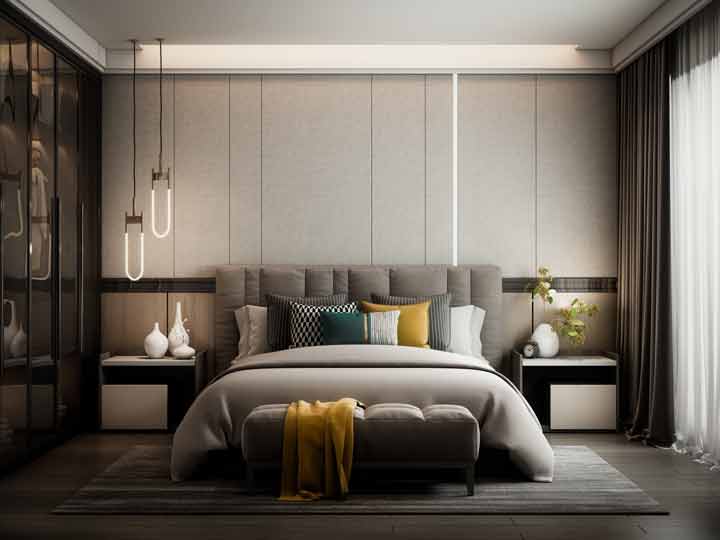
Bed Sheets
Colored bed sheets are a fun surprise under neutral bedding. And cream or yellow sheets can improve your health, according to feng shui principles! White sheets reflect light, which can stop melatonin production and keep you up longer. Stick to off-white sheet colors, or opt for a fun color. For instance, blue sheets might help you sleep better. Check out the best sheets of 2025 for a few new sets.
Wall Art
Colorful wall art in warm or exciting tones can help stimulate you in your bedroom. Wall art featuring soothing tones and colors can help relax you even more as you drift off to sleep. We recommend using wall art or cloth hangings to warm up a neutral room.
Plants
Nature can be soothing and relaxing, so bringing a little indoors can help you drift off to sleep. In addition to adding some soothing green color to your room, the act of caring for plants can reduce your blood pressure and improve your mental health. So, adding a couple to your bedroom is a great idea!
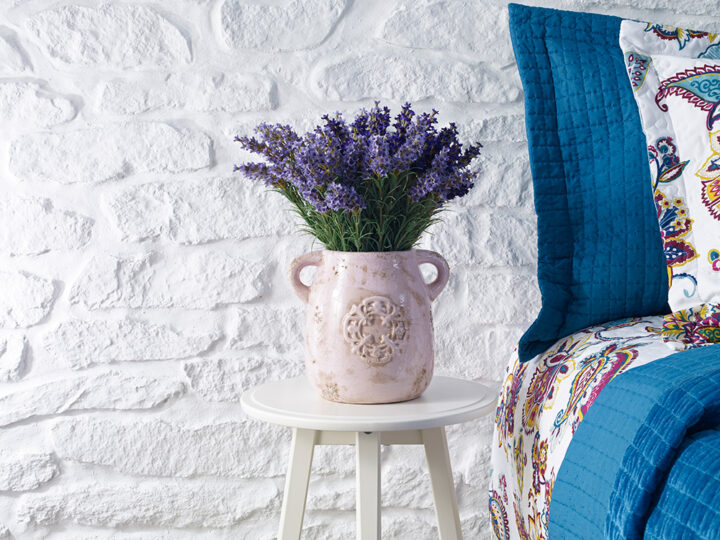
RELATED: The best plants for your bedroom
Rugs
Throw rugs or carpets are great additions to any bedroom. They can add a fun pop of color and keep your feet warm in the wintertime! Using warm-toned rugs in a soothing cool-toned room can help you feel cozy and safe before bedtime.
Wallpaper
Colorful wallpaper is a great way to add an accent wall to your bedroom. We recommend placing it behind your bed as a fun focal point when entering the room. This will prevent it from being overwhelming and ensure you still get the soothing benefits of any more neutral walls at bedtime.
Sheets As Natural Pest Control
Studies show that bedbugs are more attracted to red and black, but less attracted to green and yellow. So, using green or yellow sheets can act as a type of natural pest control. If you’re worried about bedbugs, check out our How to Identify Early Signs of Bedbugs guide to learn what to look for and how to avoid an infestation.
FAQs
Still curious about the best colors for your bedroom? We’ve answered the most frequently asked questions below.
What is the most relaxing bedroom color?
Blue is considered the most relaxing bedroom color. It is soothing and can make it easier to fall asleep.
What colors make a small bedroom look bigger?
Small rooms look larger when painted in neutral colors like off-white or beige. Light blues and lavenders may also make a small room feel bigger.
Should you paint all bedrooms the same color?
Interior designer Peter Emmanuel Rossi says painting all bedrooms the same color is dull and boring. He recommends using different shades of the same color if you like uniformity. This will create a cohesive space but won’t look monotonous.
Is gray a good bedroom color?
Gray is a nice neutral color for a bedroom, but it might make you feel lonely and sad. We recommend choosing a blue with gray undertones to get a similar look.
What are the worst colors to paint a bedroom?
The worst colors to paint a bedroom are very warm colors like red, orange, and yellow. They can stimulate mental energy and sometimes anxiety, making it hard to fall asleep.
What is limewash paint and is it a good choice for bedroom walls?
Limewash is a type of paint made from a blend of crushed limestone and water. It functions more like a finish than a paint, as it is not opaque. Limewash gives a cloud-like appearance over the walls its painted on, which can create a soothing feeling. This makes it a great choice for bedroom walls, where you want to establish a relaxing environment.

